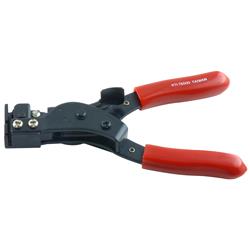but I feel and know inexperienced hands will make a better connection with a hose clamp
Dan,
I’m not sure this is entirely true. I’ve seen clamps too big for the hose size, too small for the hose size, clamps grossly over-tightened, crushing and cutting into the hose. I’ve hardly ever seen a screw type clamp used as OEM on a modern day engine.
The type of tie shown by nhamm in the original post is DESIGNED for hoses. Designed to make 100 % contact with the hose to create a LEAKPROOF connection.
I’ve been aboard boats on three separate occasions where fires have occurred. All of these fires started in the engine compartment. If I thought the average guy was incapable of installing a “hose cinch tie” on a fuel hose and making a leak proof connection, I would not recommend one.
The engine makers are all about making the production line idiot proof and 100% error free. They don’t want to rely on “skilled” labor. One reason they use these hose cinches, is because it does not take much skill to properly install one and have a leak proof connection.
I guess the best recommendation I can give is; When replacing clamps, replace with the same size and style as OEM parts.

